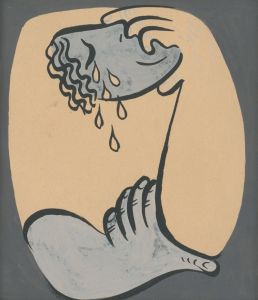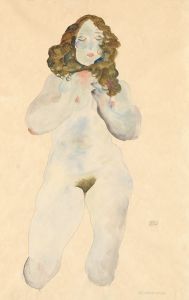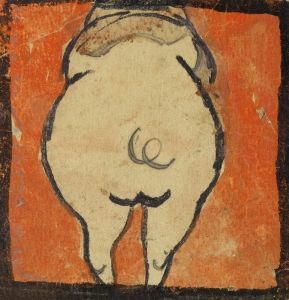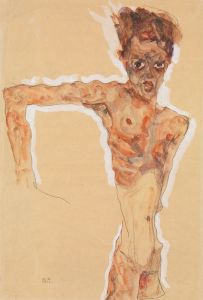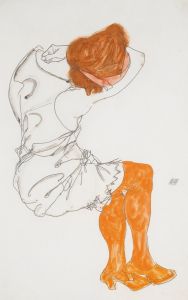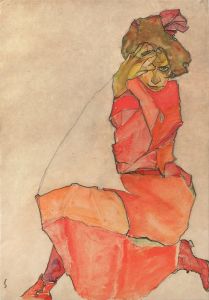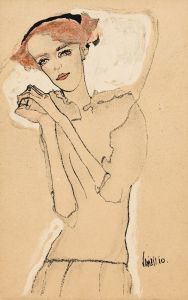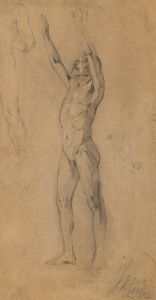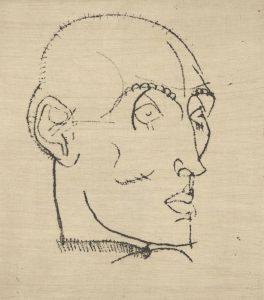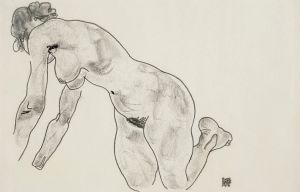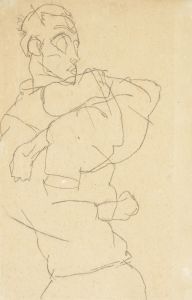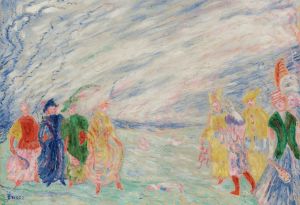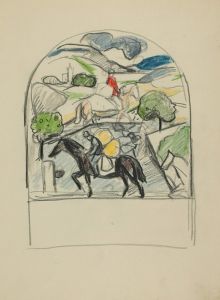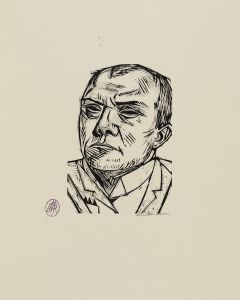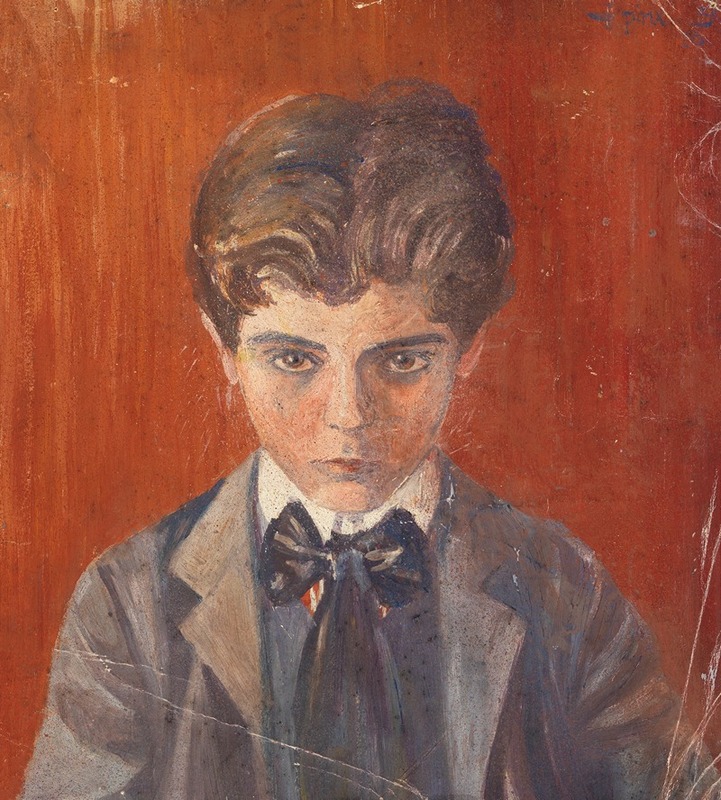
Selbstbildnis vor rotem Hintergrund
A hand-painted replica of Egon Schiele’s masterpiece Selbstbildnis vor rotem Hintergrund, meticulously crafted by professional artists to capture the true essence of the original. Each piece is created with museum-quality canvas and rare mineral pigments, carefully painted by experienced artists with delicate brushstrokes and rich, layered colors to perfectly recreate the texture of the original artwork. Unlike machine-printed reproductions, this hand-painted version brings the painting to life, infused with the artist’s emotions and skill in every stroke. Whether for personal collection or home decoration, it instantly elevates the artistic atmosphere of any space.
Egon Schiele's "Selbstbildnis vor rotem Hintergrund" (Self-Portrait in Front of Red Background) is a notable work by the Austrian painter, who is renowned for his intense and often provocative expressionist style. Schiele, born in 1890, was a protégé of Gustav Klimt and became one of the leading figures of Austrian Expressionism. His work is characterized by its raw emotional power, bold lines, and often unsettling subject matter.
This particular self-portrait is emblematic of Schiele's approach to self-representation, which frequently involved exploring themes of identity, mortality, and the human condition. In "Selbstbildnis vor rotem Hintergrund," Schiele presents himself against a vivid red backdrop, a color choice that enhances the emotional intensity of the piece. The red background can be interpreted as a reflection of the artist's inner turmoil or passion, a common theme in Schiele's work.
The composition of the painting is striking, with Schiele's gaunt figure and piercing gaze drawing the viewer's attention. His use of exaggerated proportions and angular lines is typical of his style, emphasizing the psychological depth and complexity of the subject. Schiele often depicted himself in a manner that was both introspective and confrontational, challenging the viewer to engage with his inner world.
Schiele's self-portraits are notable for their honesty and vulnerability. He did not shy away from depicting himself in a raw and unflattering manner, often highlighting his own physical and emotional fragility. This approach was part of a broader trend in early 20th-century art, where artists sought to break away from traditional representations and explore more personal and subjective themes.
The period during which Schiele created "Selbstbildnis vor rotem Hintergrund" was marked by significant personal and professional challenges. Despite facing criticism and even legal troubles due to the provocative nature of his work, Schiele remained committed to his artistic vision. His self-portraits from this time reflect a deep introspection and a desire to understand and convey the complexities of the human psyche.
Egon Schiele's contribution to the art world extends beyond his technical skill; his ability to convey profound emotional truths through his work has left a lasting impact on modern art. His self-portraits, including "Selbstbildnis vor rotem Hintergrund," continue to be studied and admired for their innovative approach and emotional depth.
Schiele's life was tragically cut short by the Spanish flu pandemic in 1918, but his legacy endures through his influential body of work. Today, his paintings are housed in major museums and collections worldwide, and he is celebrated as one of the most important figures in the development of modern art. "Selbstbildnis vor rotem Hintergrund" remains a powerful testament to Schiele's unique artistic vision and his unflinching exploration of the self.





